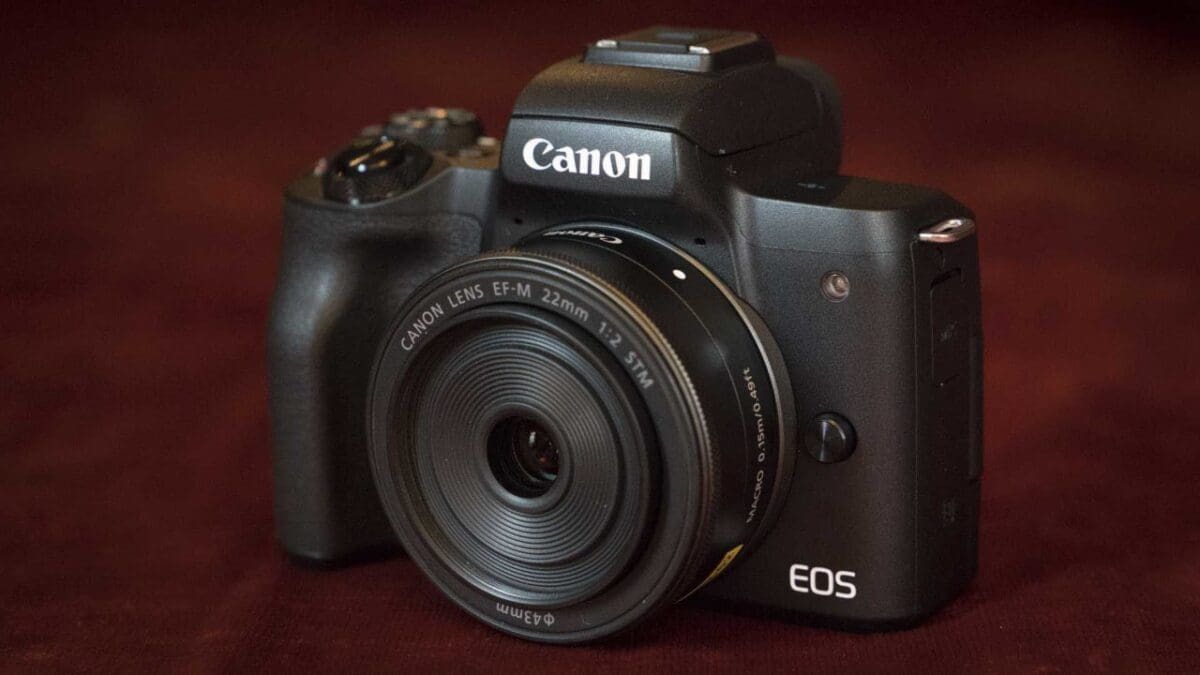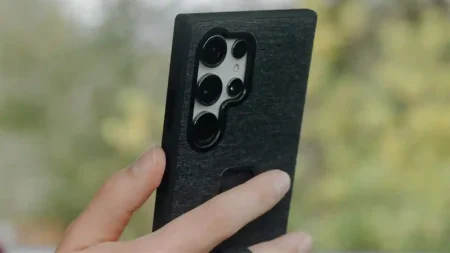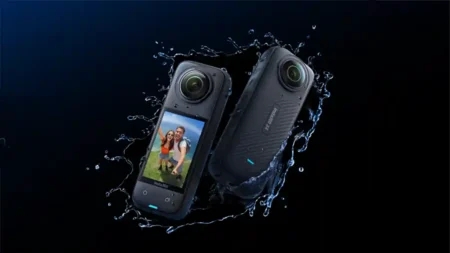Snap Verdict
Although the limitations imposed on the 4K video mode are frustrating, the M50 is the best Canon mirrorless camera to date. Crucially, the autofocus system, which was so bad in the early days of EOS M, is now very good (provided you limit yourself to shooting stills or Full HD video) and the quality of the results is excellent.
Provided you don’t have your heart set on shooting 4K video, the M50 is a great little camera for vloggers and anyone who wants a small camera with a viewfinder paired with a large (APS-C format) sensor. It might not be the Canon’s flagship mirrorless camera, but the technology inside it is the most advanced that Canon has put in a mirrorless model.
UPDATE: Canon has now introduced the Canon EOS M50 Mark II which makes a few minor upgrades on the original M50 including the ability to stream live to YouTube (although this proves tricky to do) and portrait orientation shooting for video. The limitations to 4K video experienced with the M50 are still applied with the M50 Mark II. For more information, read our Canon EOS M50 Mark II review.
For
- Excellent image quality
- Superb implementation of touch-control
- High-quality viewfinder built-in
Against
- 4K video mode crops the frame
- Plastic feel
- Limited lens range
What is the Canon EOS M50?
The Canon EOS M50 is a 24Mp APS-C format mirrorless camera that sits between the Canon M100 and M6 in the manufacturer’s line-up. However, unlike both of these cameras (and like the flagship M5), it has an electronic viewfinder built-in.
Further good news is that Canon has finally realised that people now expect more than Full-HD recording capability and the M50 is 4K enabled, but that comes with some limitations. Other notable features include a vari-angle touchscreen and Canon’s latest incarnation of its processing engine – DIGIC 8.
- Canon EOS 2000D / EOS Rebel T7 Review
- Canon EOS 4000D / EOS Rebel T100 Review
- Canon Speedlite 470EX-AI Review

Sensor and Processing Engine
Inside the M50 is an APS-C sized CMOS sensor with 24.1 million effective pixels. That means it has the same size and resolution sensor as many DSLR cameras but because there’s no mirror, it’s smaller.
The M50’s sensor is paired with Canon’s new DIGIC 8 processing engine and for the first time in a Canon M camera, or a consumer-level EOS camera, it’s possible to record 4K (3840 x 2160) video.
For stills, this sensor and processor combination enables a native sensitivity range of ISO 100-25,600 (expandable to ISO 51,200). If you’re shooting 4K video the available sensitivity range drops to ISO 100-6,400, but for Full-HD movies, it’s ISO 100-12,800 (expandable to 25,600).
Further testament to the processing engine’s power is the 10fps (frames per second) maximum shooting rate for up to 33 jpegs or 10 raw files. This is in Single AF mode (S-AF) though, so it’s only useful with subjects that stay in one place – you could use it to photograph the stages of a golf swing for example. If you want to track a moving subject, you need continuous focusing (C-AF) and you’ll have to drop to 7.4fps for up to 47 Jpegs.
In addition to the CR3 14-bit raw file format, Canon has given the M50 a new C-RAW file format that sets the camera to capture full-resolution images but reduces the file size by about 30-40%.

Autofocus
The M50’s sensor is a Dual Pixel CMOS AF device, which means that it has phase detection points on it so the camera has the same type of focusing system as a DSLR. However, in 4K recording mode, the focusing switches to contrast detection which tends to be a bit more indecisive.
According to Canon, the number of autofocus points available depends upon the lens, but the maximum number is 143. The active point can be selected automatically or manually, either individually or in zones.
In Single or One Shot AF (S-AF) mode, there’s also Eye AF focusing, which when activated works when Face + Tracking mode is selected, looking for eyes and usually focusing on the nearest one.
Find out how the autofocus system performs in the Performance section of this review.
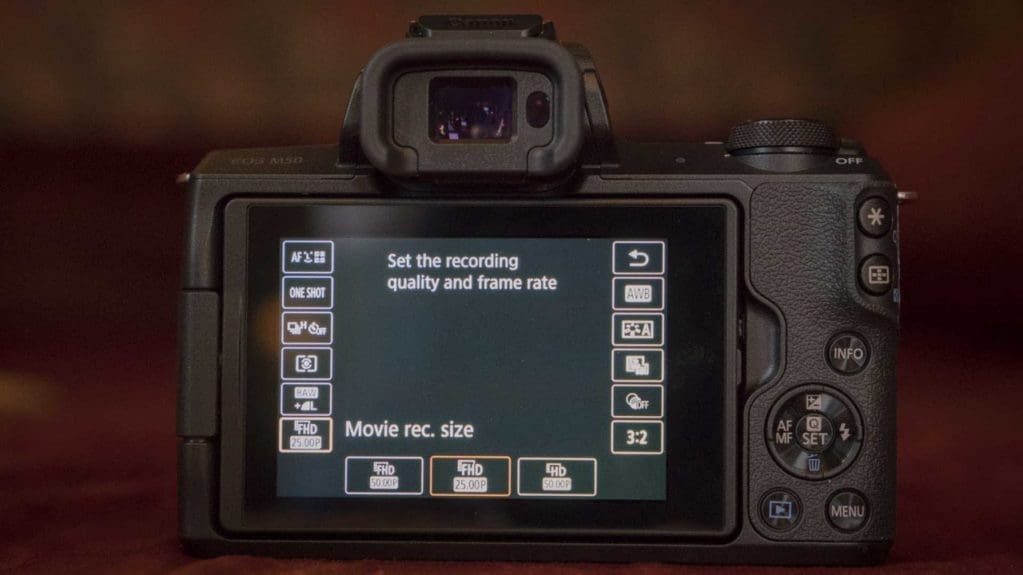
Connectivity
Canon has given the M50 Wi-Fi and Bluetooth connectivity to enable it to be connected to a smartphone or tablet via the free Canon Camera Connect app for iOS and Android.
The Bluetooth is the low energy type and can be kept on constantly to enable the camera to be ‘woken’ by a paired smartphone and then controlled remotely or images transferred. Also, as with Nikon’s SnapBridge-enabled cameras and the Fuji X-E3, it’s also possible to set the M50 to transfer images and video automatically to a phone so they are ready to share online quickly after shooting.
Images and video can also be stored on Canon Irista or synced automatically to a computer running Canon’s Image Transfer Utility 2.
Key Specifications
[table id=67 /]
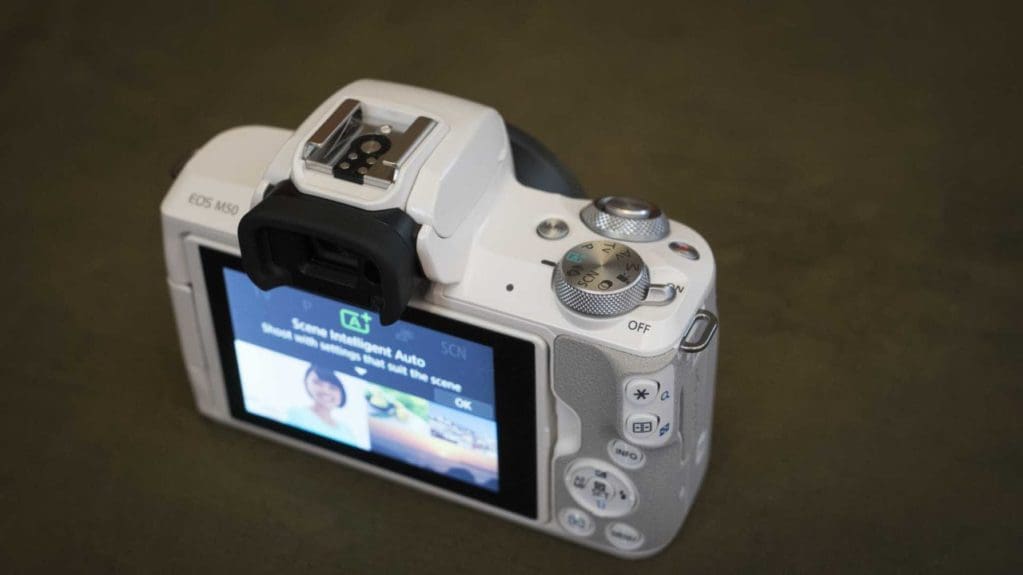
Build and Handling
As it has a viewfinder in the centre of its top-plate and a grip on its front, the M50 looks like a mini-DSLR. It’s small and light and feels pretty comfortable to hold one-handed.
With the 15-45mm kit lens mounted, I found the M50 is light enough to walk along with it held at arm’s length for some considerable time. It sits neatly in your hand with a finger behind the body for support and the screen flipped out to the side so you can keep an eye on the framing when you’re vlogging. Follow the link to see this in action.
While the low weight is good for portability, the white version of the M50 has a very plasticky feel that isn’t especially pleasing. It’s quite nicely put together, but the finish doesn’t feel very hard-wearing.
Controls
The presence of the viewfinder makes the M50 look very similar to the EOS M5, but the control arrangement is a blend of it and the M100’s. For example, the top-plate has a mode dial with a comprehensive array of shooting options (including program, shutter priority, aperture priority, manual and scene modes) but there’s no exposure compensation dial alongside it.
There’s also only a single dial for adjusting exposure. That means that exposure compensation is set by pressing the up navigation key and then using the adjustment dial. It’s a tried and tested control mechanism, but dual dial control is quicker and easier to use.
The exposure compensation control remains active until the button is pressed again.
The back of the camera is closer in layout to the M5 and M6, with buttons to access key features such as the AF point selection mode, auto exposure lock, the focus mode and the flash options. There’s also a button to activate the Quick Menu which brings up a grid of features for adjustment on-screen.

Screen and viewfinder
On the back of the M50 is a 3-inch 1,040,000-dot touch-screen. This is mounted on a vari-angle hinge so it can be flipped and twisted to give a clear view when you’re shooting from creative angles.
Canon has embraced touch-control affording it over menu options as well as AF point selection, and the M50 has the high-quality implementation we’ve come to expect from the brand. You can select features in the menu or the Quick menu with a tap and the screen responds quickly.
Furthermore, when Touch and Drag AF is selected, you can set the AF point with your thumb on the screen while you’re looking through the viewfinder. It’s possible to restrict the area that’s used for this to prevent you nose setting the AF point for you. The system works well and I find it a very useful feature.
One small bugbear is that there’s a noticeable delay between taking the shot and it appearing on the screen or in the viewfinder.
While the 0.39-inch type, 2,360,000-dot OLED electronic viewfinder (EVF) isn’t the largest or highest resolution device around, it’s on a par with the EVFs in cameras like the Fuji X-T20 and X-E3. It gives a clear view and is especially useful when shooting moving subjects or in bright sunshine, but its contrast level is a bit on the high-side so detail isn’t visible in the shadows..
Vlogging
Although the M50 has much to recommend it as a vlogging camera, when it’s set to shoot 4K video there’s a 1.6x crop applied to the image. That’s in addition to the 1.6x crop that comes as a result of using an APS-C rather than full-frame sensor.
This means that the 15-45mm kit lens effectively becomes a 38.4-115.2mm optic, which isn’t ideal for use when shooting with the camera held at arm’s length. If this type of shooting is important to you then you may want to consider buying the EF-M 11-22mm f/3.5-5.6 IS STM to give wider framing.
Interface
Canon introduced a new Guided interface with the EOS 800D (aka Rebel T7i) and EOS 77D to make the cameras easier to use. This is also available in the M50, but as with the two SLRs, you can switch to the Standard interface if you prefer.
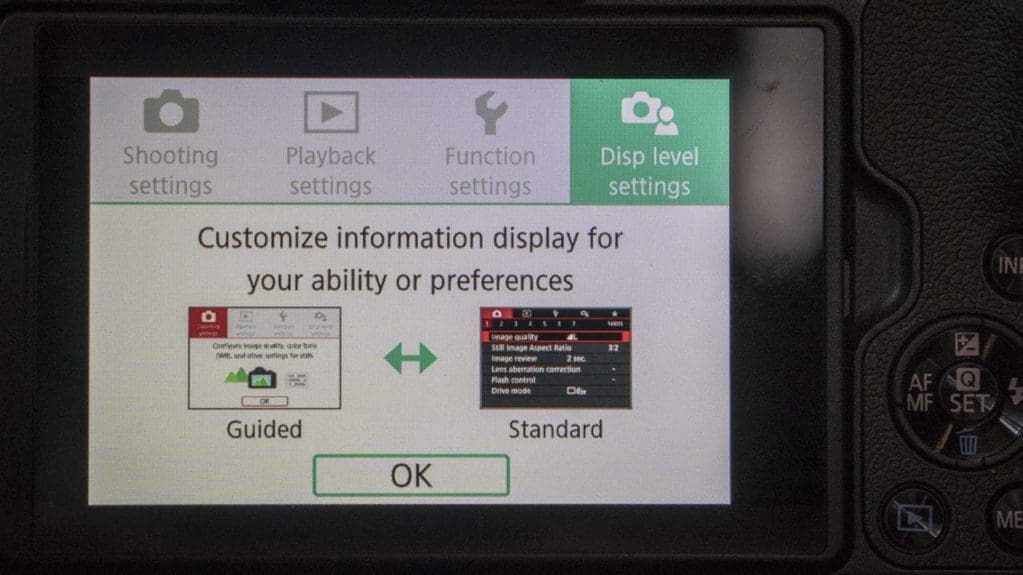
This is an interesting difference between the M50 and the M100 as the M100, which is a more entry-level camera, doesn’t have the Guided mode. At the M100 launch, I was told that this was because the camera had been developed by the PowerShot team rather than the EOS/SLR team.
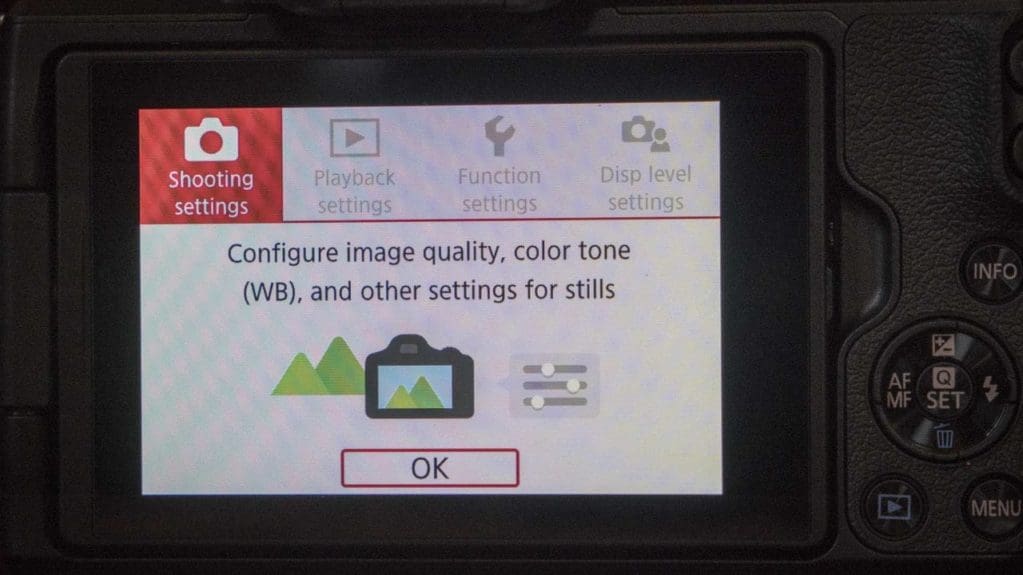
I’m more used to using Canon cameras in the Standard mode, but I used the M50 in the Guided mode for the two weeks that I had it for testing and I found it easy to find the options that I wanted.
Performance
ln many situations you can leave the M50 to its own devices and you’ll get decent results. The auto white balance setting, for example, usually does a good job of capturing the atmosphere of a scene well, producing images that look attractive.
Similarly, the Evaluative metering system takes most scenes in its stride and usually delivers a pleasant exposure. A key advantage of an electronic viewfinder and the full-time live view on the main screen is that the image is displayed as it will be captured, so you are usually able to see if the camera is about to get things wrong and adjust accordingly.
Image Quality
The results from the M50 are consistent with those from a high-quality 24Mp APS-C format sensor with plenty of detail being recorded at the lower sensitivity (ISO) settings. Fine detail such as fur looks very natural and impressively sharp.
Noise is controlled well for much of the sensitivity (ISO) range and it’s only when you reach around ISO 3200 that detail starts to be lost by the action of the noise reduction system. If possible, I’d steer clear of the uppermost sensitivity settings and aim to stay to ISO 12,800 or lower if possible.
Autofocus
Canon’s early EOS M-series cameras were let down by their sluggish autofocus system but the phase detection focus system of the M50 is very good. It even manages to get moving subjects like my dog sharp and to track him around the frame. The Face Detection + Tracking and Eye AF focusing systems are especially useful for vlogging and I found the camera was able to identify most faces within the frame.
The AF system works extremely well in Full HD video mode and it kept my face sharp when I was vlogging on the move. However, it becomes a bit less sure of itself when you switch to shooting 4K video and the contrast detection AF system takes over.
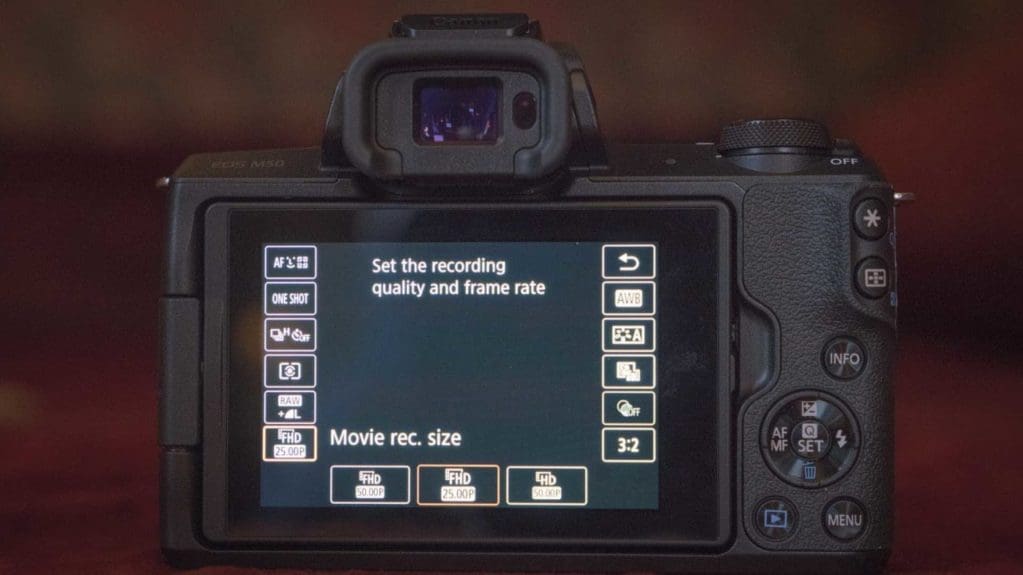
Sample Images
Follow the link to browse and download full resolution images.
Scroll down to see some video samples.






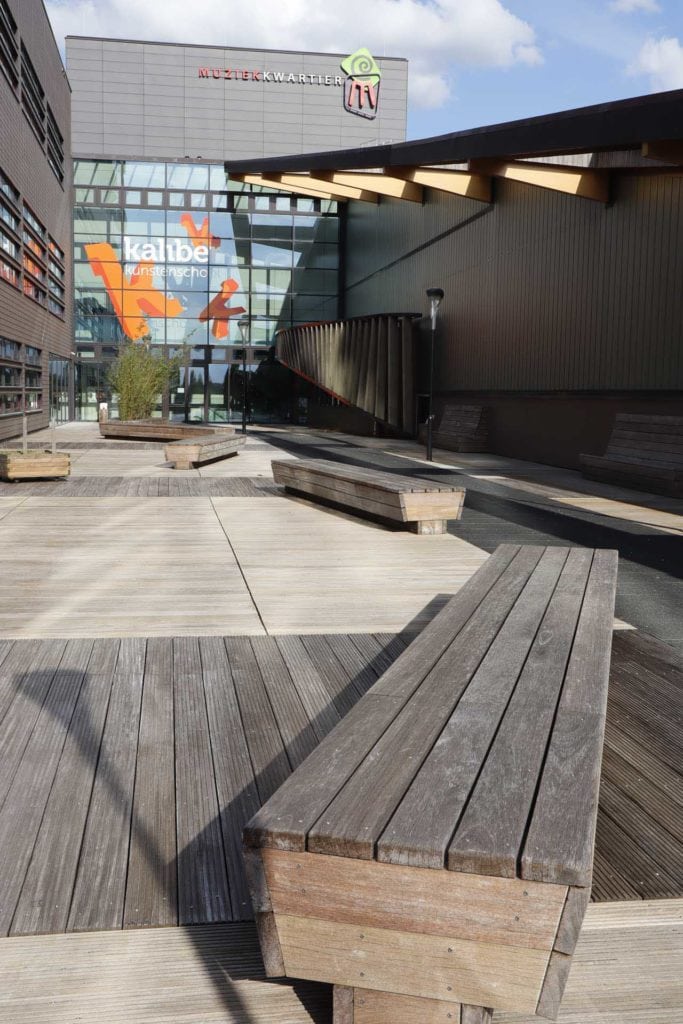
[FAG id=61216]
Sample Video
The video below was shot using the Canon EOS M50 with the EF-M 15-45mm f/3.5-6.3 IS STM lens mounted. The camera was in Full-HD and autoexposure mode with audio recording left to the onboard mic.
The video below was shot in 4K with the exposure and white balance set to automatic. The internal mic was used again for audio.
Verdict
The quality of the images from the Canon EOS M-series has never really been an issue, from the outset the cameras have produced images on a par with those from the company’s DSLRs. Where the first few models failed, however, was with their autofocusing system. The original EOS M was laughably slow. Thankfully, each successive model has improved on this faltering start and the M50’s AF system is very good.
The Face Detection system is particularly good and this combined with the flip-out screen makes the M50 an excellent camera for vlogging provided you don’t want to use the 4K video. While the quality of the results in 4K video mode can’t be called into question, the restraints applied to it can. The loss of phase detection focusing is a shame and the 1.6x crop is a pain.
With a high-quality 24Mp sensor, the Canon M50 is suitable for more than just vlogging, it can deliver superb stills as well. And although I’m not a fan of the white finish, it’s a good-looking little camera that feels nice in your hand and is easy to use.
It feels like Canon has finally worked out what people want from a mirrorless camera and although there are a couple of frustrations, the M50 is very nice.
Should I Buy the Canon EOS M50?
The M50 makes a good choice of camera for Canon DSLR users who want a smaller alternative to their existing SLR. The EF-EOS M mount adaptor means that Canon EF-mount lenses can be used – and it works well. Meanwhile, the Guided interface also makes the M50 a good model for novices.
It’s also an excellent choice of camera for anyone who wants to get into Full HD vlogging, it makes it easy and the results are great.
The downside to the M50 is the limited lens range. Canon introduced the EOS M system back in 2012 and it hasn’t really raced to bring out an extensive collection of EF-M optics. There are currently just 7 directly compatible lenses listed on Canon’s website. Of course, as mentioned earlier, there’s also the EF-EOS M adaptor for those who have a collection of Canon EF-mount optics, but that’s not an ideal option for anyone investing in their first interchangeable lens camera.
The lenses available in the EF-M count have focal lengths ranging from 11mm to 200mm, which equates to around 17.6mm to 320mm on a full-frame camera. That might sound like good coverage, but with the exception of the EF-M 22 f/2 STM there are no big aperture optics, there isn’t a dedicated portrait lens and there are no fast telephoto lenses. So while there are sufficient optics to get you started, if you begin to get serious about photography you may find yourself looking elsewhere.
